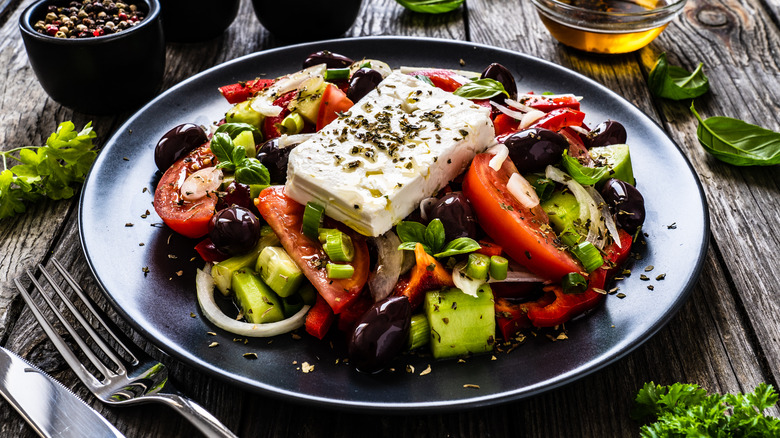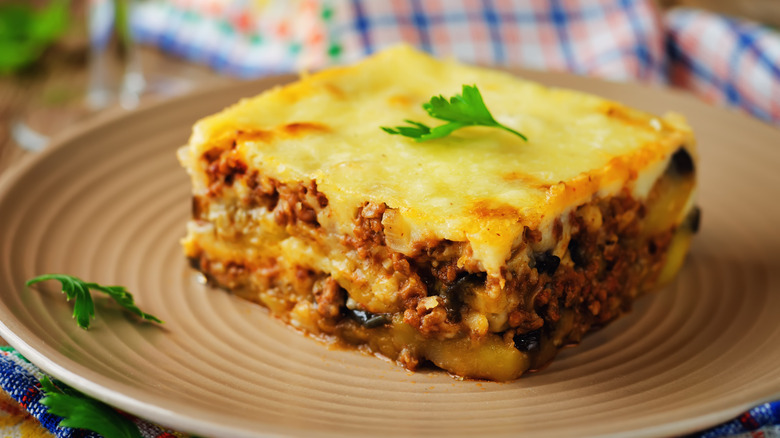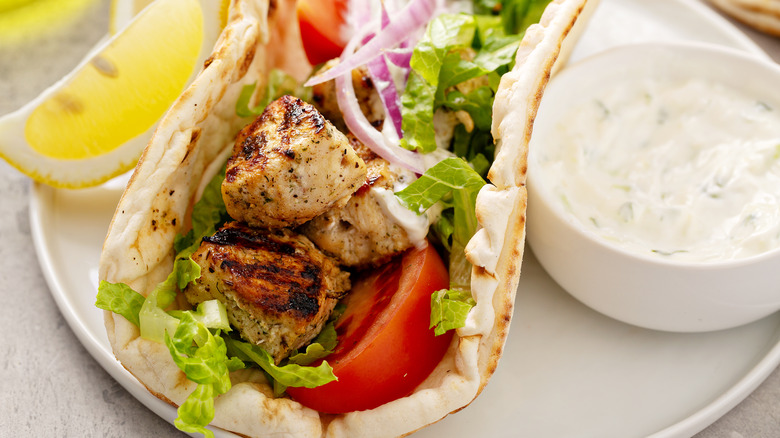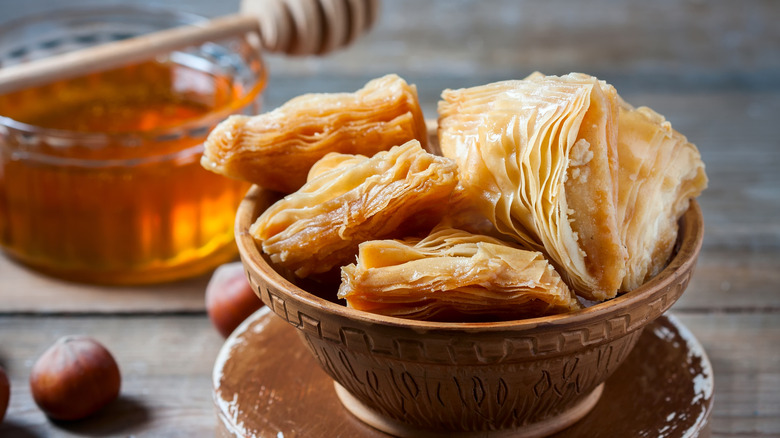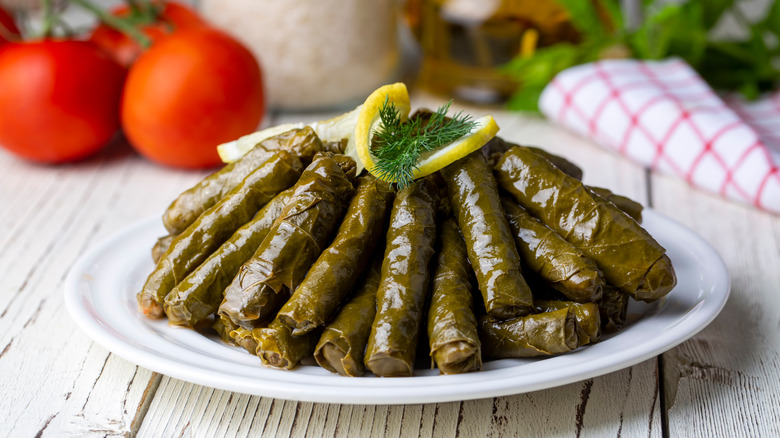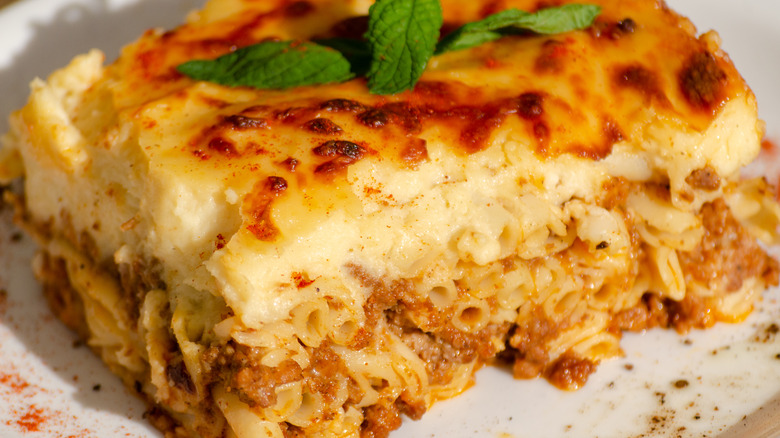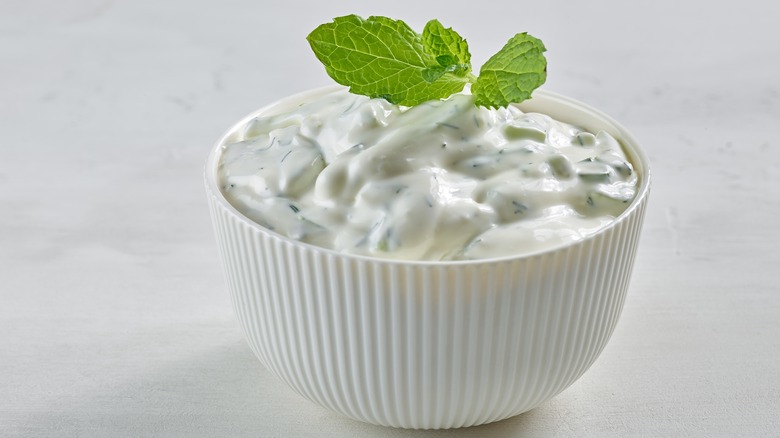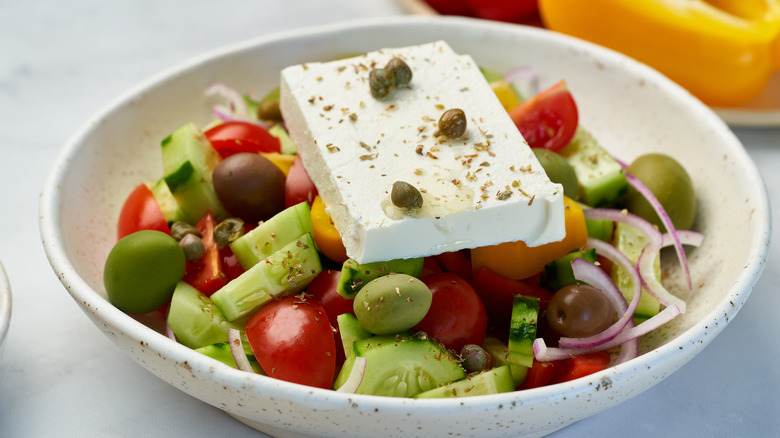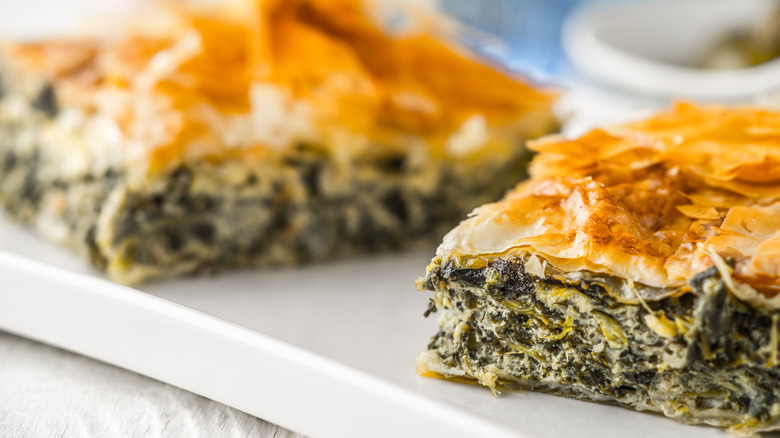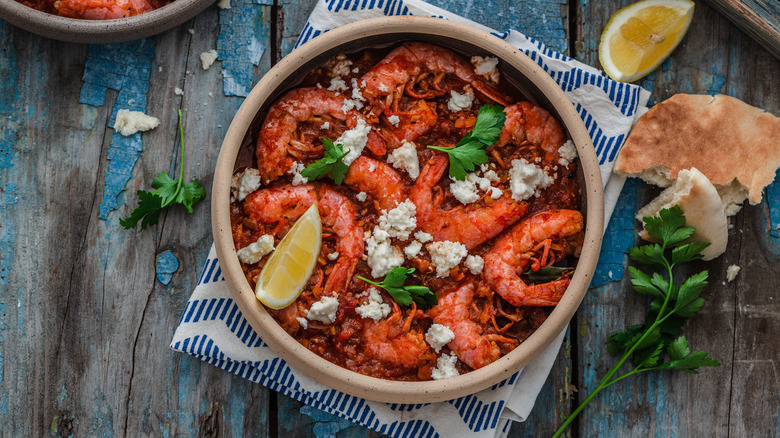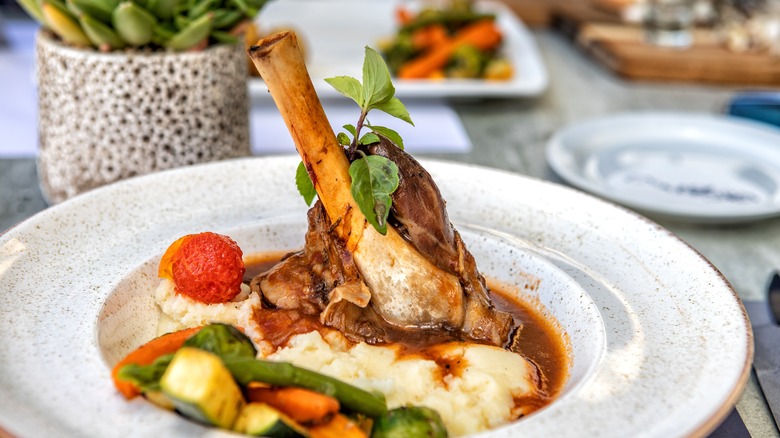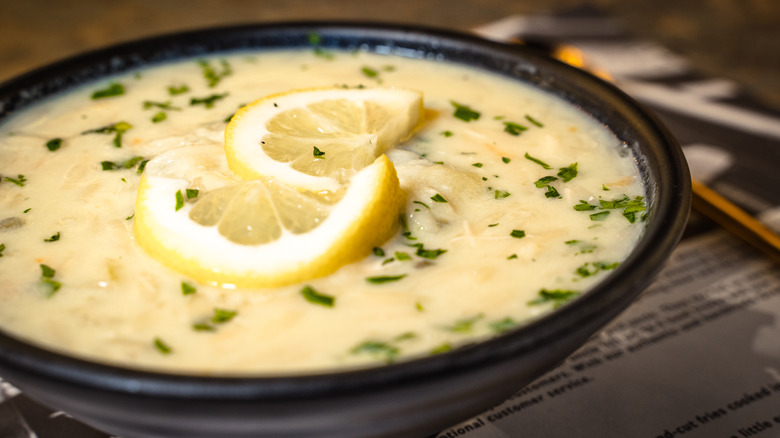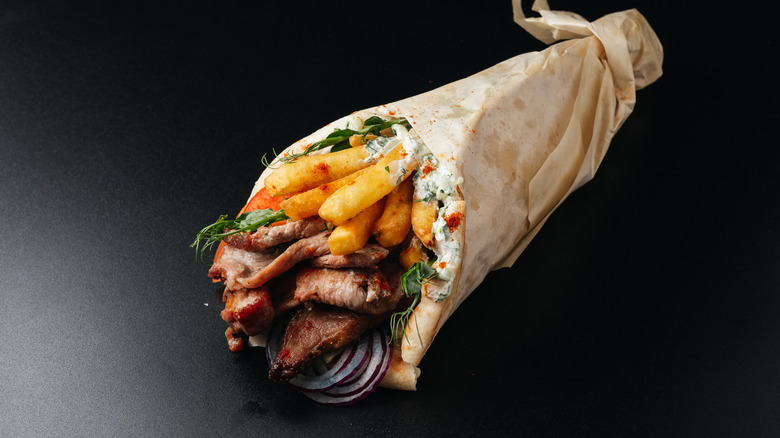13 Traditional Greek Dishes And How To Spot The Fake Versions
Greece, a country of ancient myths and modern sun-soaked holiday resorts, has given us more than just breathtaking vistas. It is the birthplace of many classic dishes that have influenced worldwide cuisine, from the comfort of moussaka to the delicate layers of baklava. However, the popularity of these dishes has led to countless imitations of these classics, which aren't necessarily true to the original Greek roots.
The beauty of Greek cuisine is that it is built on simple, fresh food cooked well, and many modern versions overcomplicate dishes by adding ingredients that just don't belong.
Join us as we journey through Greece's iconic dishes, examining the subtle distinctions between authentic Greek classics and replicas that have strayed too far from the original. Armed with this knowledge, you can ensure every trip to your local taverna transports you to southern Europe and never again have to settle for anything less than the real deal.
Moussaka
Moussaka is the quintessentially Greek dish that immediately conjures images of a sunlit taverna. Often unfairly referred to as Greek lasagna, moussaka is a wonderful dish in its own right and holds a special place in Greek cuisine.
The beauty of authentic moussaka lies in the luxurious layers of its three star ingredients — eggplant, meat, and béchamel sauce. The eggplant should be thinly sliced and fried or grilled, providing the moussaka with its distinctive earthy taste. While some modern versions incorporate zucchini or potatoes, traditional moussaka always champions eggplant.
The meaty layer contains either lamb mince — or a mixture of lamb and beef — fried with tomatoes, red wine, and oregano. Fake versions may use pork or chicken mince instead of rich lamb, but the authentic depth of flavor will be lost.
Next comes the blissful béchamel, a thick creamy sauce made from butter, flour, and milk. It should be thick enough to stand as its own layer and not seep into the eggplant, so it should be much thicker than its lasagna counterpart.
To construct an authentic moussaka, each layer should be carefully spooned into the dish before baking, ensuring the layers remain separate. If your moussaka is a jumble, it hasn't been prepared authentically.
The ultimate test for whether your moussaka is authentic is the balance of flavor. The earthiness of the eggplant, the meat's richness, and the béchamel's creamy delight should be a harmonious blend. If one overpowers the other, it may not be the real deal.
Souvlaki
The ultimate Greek street food, souvlaki is a popular dish loved by tourists and locals alike. A simple dish at heart, authentic souvlaki doesn't need a lot of fancy additions — just perfectly grilled meat with classic seasonings such as lemon and oregano. The common meat for souvlaki is pork, though chicken is an authentic alternative. The meat should be grilled to perfection on a skewer, with a juicy center and caramelized outside. If your pork is overcooked and dried out, it may not be authentically prepared.
Now to the accompaniments — the fillings in your souvlaki will let you know if you've been served the real deal or a less-than-convincing imitation. A traditional souvlaki will be served in pita bread with sliced tomatoes, onions, and some tangy tzatziki drizzled over the top. Cypriot varieties may contain halloumi cheese, and you will now find modern vegetarian versions with aubergine replacing the meat. As delicious as these variations may be, they do not represent the authentic serving of Greek souvlaki.
Whether strolling the streets of Athens or having lunch in your local Greek restaurant, souvlaki is a dish to relish. A true authentic souvlaki will taste like a bite of the Mediterranean — smoky chargrilled meat, aromatic herbs, and a piquant dash of tzatziki; a mouthwatering treat for your tastebuds.
Baklava
Baklava is a sweet Greek masterpiece enjoyed throughout the world. Layers of phyllo dough oozing with honey and nuts, there are many baklava varieties, but the traditional Greek version has some telltale signs.
The origins of baklava have been hotly disputed over the years. From the Middle East to Turkey, Bulgaria, Armenia, and of course, Greece, everyone has their own version. In the authentic Greek version, you will find paper-thin layers of phyllo dough, giving the pastry its delicate texture. The baklava has not been prepared correctly if the dough is thick and stodgy.
A traditional Greek baklava will showcase walnuts in the filling, differing from the pistachios in the Turkish version. While both fillings are delicious and modern recipes may mix the two, Greek baklava will contain walnuts as the hero.
The syrup is a crucial component of baklava — if not correctly balanced, it can make the dish overly sweet and sickly. A genuine Greek baklava syrup is made from honey, sugar, water, and often a splash of citrus juice to brighten the flavors. If your baklava tastes too sweet, it may not be a Greek version of the syrup.
The real test of the authenticity of your baklava will be in the eating and texture of the dessert. Biting into it, you should hear a satisfying crunch of the delicate top layer, followed by the indulgent chewy syrup-soaked layers underneath. If the pastry is too soggy or dry, you will be deprived of the delectable baklava experience.
Dolmades
Dolmades are delectable parcels of goodness wrapped in vine leaves, often seen at Greek family gatherings or special events. Frequently served alongside finger foods as part of a mezze platter, dolmades (the plural of dolma) contain simple ingredients but deliver on flavor.
The first step to spotting authentic dolmades is to inspect the wrapping. Traditional Greek dolmades are wrapped in grape leaves, often soaked in brine. If your dolmades come wrapped in cabbage or an alternative casing, you should be suspicious of their legitimacy.
The filling in dolmades consists of perfectly cooked rice seasoned with herbs such as dill and mint. Though some versions may contain ground meat like beef or pork, it should not make them heavy or dense. An overly filled dolma may not have been prepared traditionally.
Another giveaway as to the validity of dolmades lies in the rolling of the vine leaf. A skilled Greek chef will wrap the dolma tightly enough to contain the filling as you pick it up but allow the gorgeous filling to spill into your mouth as you bite into it.
In keeping with the simplicity of the dish, dolmades are served with a classic dressing of high-quality olive oil and lemon juice. Dolmades with a creamy, heavy sauce are not likely to be authentic.
In essence, dolmades should be bite-sized morsels that transport you to a Greek paradise with every mouthful. If your dolmades are not invoking visions of sun-kissed Mediterranean shores, you may have been duped.
Pastitsio
The Greek comfort dish pastitsio is a hearty pasta dish that sings the flavors of Greece with every bite. With its indulgent layers of pasta, ragu, and béchamel, this bake is on every Greek grandmother's list of signature dishes. An authentic pastitsio is a perfectly balanced masterpiece, so you want to get the real deal when ordering in a restaurant.
The pasta used in pastitsio is crucial — long, tubular pasta, similar to Italian bucatini. A cross between macaroni and spaghetti, pastitsio pasta can be purchased in specialty supermarkets, but bucatini can be used as a substitute. Pastitsio is not made with penne or spaghetti, as this is not authentic.
Next comes the rich meat sauce made with beef or lamb, cooked with tomatoes, herbs, and red wine. Cinnamon is also added to provide unique Greek flavor that differentiates it from other Mediterranean ragu sauces. Pastitsio made with alternative meats such as chicken or with additional vegetables is not true to its Greek roots.
To assemble pastitsio, distinct layers are needed — pasta at the bottom, topped with meat sauce, more pasta, then thick béchamel on top. There is often a layer of Greek cheese below the béchamel layer, usually kasseri or kefalotyri cheese, though feta may also be used.
When looking for authentic pastitsio, the essence lies in the delicious layers and balance between them. If your dish tastes like every pasta bake you've ever eaten, treat yourself to the real deal next time at your local Greek taverna.
Tzatziki
Tzatziki is central to Greek cuisine, and for good reason. It's more than just a dip — it is a creamy masterpiece combining fresh cucumber with tangy yogurt to create the perfect accompaniment for Greek dishes. The beauty of tzatziki lies in its simplicity, making it easy to spot less-than-authentic versions.
The star of tzatziki is the decadent Greek yogurt. It should be dense and creamy, giving the tzatziki its luxurious texture. Goat and sheep milk yogurt are both authentic choices, but Greek yogurt from cow's milk is also a common option. If your tzatziki is watery, it may have been made with a lower-fat yogurt or non-dairy alternative.
Tzatziki is made with fresh cucumber, which contains 96% water, so it is very important to squeeze excess moisture out of the cucumber after grating. This creates the perfect crunch without leaving the dip soggy and diluted. If your tzatziki contains watery cucumber, shortcuts have been taken.
The Greeks aren't shy with their use of garlic in cooking, and tzatziki is no exception, with the garlic flavor shining through the creamy dip. Though it shouldn't overpower the rest of the ingredients, if your tzatziki is mild in flavor, it is likely lacking enough garlic, or an alternative such as garlic powder has been used.
Essentially, tzatziki is a beautifully balanced medley of a few delicious ingredients, and an authentic version will allow them to complement each other beautifully, creating a fresh and creamy accompaniment to your favorite Greek dishes.
Greek salad
A Greek salad, or Horiatiki as it is known in Greece, is a fresh, vibrant dish full of color and flavor. Loved and savored far beyond the shores of Greece, this salad has taken on a life of its own and led to many modern variations — but if you are looking for the real thing, there are a few key elements to watch out for.
Fresh, colorful vegetables are the foundation of a Greek salad — refreshing cucumber, juicy tomatoes, and meaty Greek olives, perhaps with bell pepper or red onion thrown in for some crunch. If your salad has croutons or other vegetables in it, it may be a modernized version rather than authentic Greek.
The highlight of the Horiatiki is undoubtedly the feta cheese, and in an authentic salad, it shouldn't be crumbled into small pieces but instead served on top of the salad as one large block of tangy perfection. True Greek feta should also be made from goat or sheep's milk — many popular brands are actually made from cow's milk — so your cheese should have that unmistakable pungent feta flavor if it is genuine.
A simple dressing brings the whole dish together — made from olive oil and red wine vinegar, it will elevate the salad without making it soggy or heavy. Creamy dressings are not traditional and will affect the balance of the dish. An authentic Greek salad is the pinnacle of simplicity, and straying too far from the original recipe will lose its essence.
Loukoumades
Loukoumades, often referred to as Greek doughnuts, are crispy deep-fried balls of dough that are irresistibly fluffy on the inside. Drizzled with honey and coated with cinnamon and crushed nuts, they are a sweet-lovers dream. Let's look at what separates these Greek treasures from the competition.
Genuine loukoumades should be bite-sized and have a light and fluffy texture. If you find they are dense and claggy, they have likely not been prepared authentically. After being deep-fried, they are coated in a delicious honey syrup that gives them their irresistible sweet taste. Modern versions may coat them in chocolate sauce or a different type of syrup, but this is not authentic.
Toppings should be kept simple — a dusting of cinnamon and some enjoyable chopped walnuts. While other nuts may be used in a true Greek recipe, there shouldn't be any additional toppings to complicate the flavors.
Tucking into a plate of warm Greek loukoumades is a joy like no other. You should be able to taste the love put into them with every bite — if not, there's a good chance they're not the real Greek deal.
Spanakopita
Spanakopita is a savory Greek pie that celebrates the wonderful combination of spinach and feta cheese layered with flaky phyllo dough. A true Greek classic, spanakopita is a much-loved dish throughout Greece and beyond, with its crispy layers and soft, savory filling. Here's what sets a true Greek spanakopita apart from the competition:
The key to a great spanakopita is the layers of phyllo dough. Wafer-thin layers will give the pie its delicious crunch when you bite into it before uncovering the filling below. If your pastry layers are thick and doughy, it will not have the same texture as the original.
The stars of the spanakopita filling are undoubtedly spinach and feta. The tangy cheese balances the earthy flavor of the spinach to create a perfectly balanced combination. Fresh herbs can also be added, usually dill and parsley, to complement the spinach mix. If your spanakopita has a dull flavor or if the filling is overly soggy, it may not have been authentically prepared.
Spanakopita can be served either as one large pie cut into slices or as individual pastries. It is a delicious standalone dish but can be served with tzatziki if desired. There is no need to serve any other sauce or dressing alongside it, and any version that does is not authentically Greek.
Shrimp saganaki
The Greek classic shrimp saganaki is a mouthwatering concoction of juicy shrimp coated in a spicy feta and tomato sauce. Traditionally cooked in a skillet and served still-sizzling, this delicious appetizer is a celebration of simplicity and fresh ingredients.
The heroes of this dish are the shrimp themselves, and they should be fresh and large. King prawns will give the perfect meaty texture that the dish deserves, and they are often cooked with their tails on for extra flavor. Frozen shrimp may spoil the texture of the dish and are unlikely to be used in authentic saganaki.
The rich saganaki sauce is a nourishing blend of tomatoes, onions, and garlic, usually with a splash of ouzo. Fresh, ripe tomatoes will give the sauce an authentic Mediterranean vibe — and the sauce should be thick and luxurious. A thin, watery sauce means that the saganaki is not authentic.
A real shrimp saganaki will always have feta cheese to complement the beautiful prawns and piquant sauce. The tangy flavor and creamy texture of feta are the perfect match for the other elements of the dish and should not be swapped for alternatives. If your saganaki doesn't have the sharp burst of feta, it may be an inauthentic version using different cheese.
The perfect Greek shrimp saganaki should be simple but delicious, championing the three main ingredients of shrimp, sauce, and feta. If your dish is overly complex, as delicious as it may be, it is likely not a true Greek saganaki
Lamb kleftiko
Lamb kleftiko is one of Greece's most cherished dishes, a slow-cooked traditional recipe steeped in history. It is an embodiment of Greek passion and flavor, so distinguishing an authentic lamb kleftiko from imitations is crucial if you want to savor the true essence of Greece.
The key to a perfect lamb kleftiko is the cooking time — it should be slow-cooked for hours, allowing the meat to become tender and fall off the bone. Speaking of bones, an authentic kleftiko should always be cooked with the bone in to provide a deep flavor to the dish. If your kleftiko is tough from improper cooking or is boneless, it is not the authentic Greek dish you were hoping for.
For a rich flavor to this roast lamb, a variety of classic Greek seasonings must go into the dish. Oregano, lemon, garlic, and sometimes cinnamon are added to the meat before cooking to allow them to impart flavor into the lamb as it slowly roasts. If your lamb kleftiko tastes bland and is lacking that essential Greek flavor, it has not been authentically prepared.
Lamb kleftiko is another simple Greek dish that has loads of flavor and is rightly beloved across Greece. As a simple dish, getting the basics right is so important to create an authentic experience and provide you with a true taste of the country. If your lamb kleftiko manages that, you can be confident it is the real thing.
Avgolemono
Avgolemono, with its silky-smooth texture and satisfying taste, is a hallmark of Greek cuisine. This lemony chicken soup, often infused with rice, is a simple dish that packs a flavorful punch. Knowing what sets an authentic avgolemono apart from its less genuine counterparts is essential if you are seeking a true Greek culinary experience.
Ultimately, avgolemono relies on three important ingredients: chicken broth, lemon, and eggs. These ingredients combine to create a creamy, luxurious soup. If your avgolemono is missing any of these or if they're overshadowed by other overpowering flavors, it might be venturing away from tradition.
A good avgolemono has a beautifully creamy texture in spite of no cream being used. Achieving this requires culinary finesse, as the eggs need to be handled carefully. The eggs should be 'tempered,' meaning the warm chicken broth is added to them slowly, preventing them from curdling. If your soup appears to have curdled or separated, not enough care has been taken by the chef during cooking.
Avgolemono is usually garnished with a sprinkling of fresh herbs such as parsley or dill and some black pepper. Any extravagant toppings represent a modern twist rather than the authentic Greek version.
Gyros
Gyros is a Greek classic that has found its way into the hearts of food lovers worldwide. These mouthwatering pita wraps have created many copycat variations over the years, but there are a few clues you can use to spot authentic Greek gyros.
Traditionally, gyros are made from pork or chicken, stacked in marinated slices on a vertical rotisserie, and seasoned with rosemary and oregano. Slices of meat are shaved from the rotisserie when serving. If your gyros contain meat that has simply been fried in a pan, it is not the real thing.
The fillings in gyros are usually quite simple — a few slices of tomato and onions and a spoonful of tzatziki. A few fries are often included for some crunchy texture — this is Greek fast food, after all. If your gyros are overloaded with fillings that suppress the flavor of the meat, they are not prepared authentically.
A soft, slightly chewy pita bread is used to wrap the meat. It should be warm, fresh, and not overly crispy. Authentic pitas are light and fluffy, a perfect companion to the savory meat. Your gyros should be served in a wrapped style rather than a sandwich, allowing you to take a bite that includes all the wonderful ingredients in one go.

